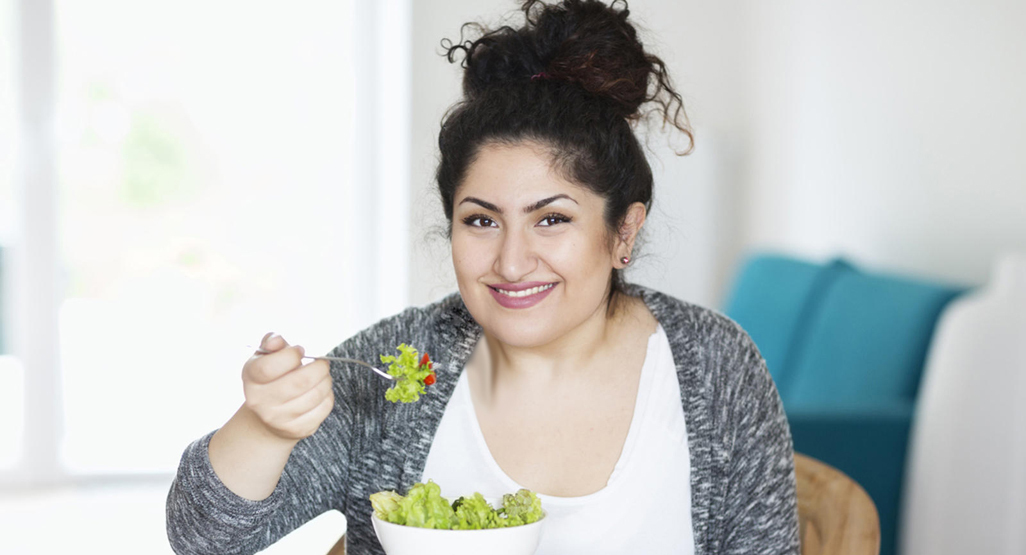
What foods make arthritis worse These are the most common questions we hear. Some are inflamatory, while some aren't. But what does all this mean? It is important to understand what you are eating. A healthy diet is crucial to keeping inflammation down. Including garlic in your diet is especially helpful. It has anti-inflammatory properties and can even help reduce joint pain. For people suffering from arthritis, omega-3 fatty oils can be beneficial as they reduce inflammation.
Some foods and drinks may help you to fight arthritis. Research has shown that antioxidant polyphenols in orange juice, green tea and other beverages can protect the body from injury. Also, be aware of the calories and portions you are eating. Hydration is key to staying hydrated. Some foods can worsen arthritis. What foods should you avoid? These are some ideas. These ideas can make you feel happier.
Avoid processed sugar-sweetened sodas. These can cause inflammation, which can worsen arthritis. Don't eat excessive sugar. Studies show that excessive sugar intake can worsen symptoms. Inflammation is often a major cause of arthritis symptoms. It is important to reduce your intake of these foods. This will help your condition. It's also wise to avoid red meat, which contains high levels of fat and sugar.

Avoid simple carbohydrates. Simple sugars can spike your blood sugar and cause inflammation. Healthy eating should include plenty of vegetables, such as tomatoes or eggplants. A balanced anti-arthritis regimen should include lots beans and nuts. You can also eat roasted vegetables. These vegetables can reduce your chance of developing arthritic joints. Refined sugar should be avoided. This is an inflammatory drug that can increase your chances of developing arthritis.
Refined grain are very inflammatory and can raise blood glucose. Refined grains can also cause inflammation by increasing the production of AGEs. Consequently, they can cause pain and inflammation. Avoid wheat products and dairy. These foods can exacerbate your arthritis symptoms. They are loaded with omega-6 fatty acids that can be dangerous for your joints. Refined grains can increase blood glucose levels and lead to arthritis.
Sugar and processed carbs should be avoided if you have RA. They can increase inflammation and worsen the symptoms of arthritis. Adding more anti-inflammatory foods to your diet is beneficial, but it's important to remember that there are some exceptions to this rule. For example, eggs and milk are considered healthy for most people. But they can make a difference in the body. If you're suffering from RA, try eating a healthy diet that includes eggs and nuts.
Studies have shown that eating red meat can worsen arthritis symptoms. It can also cause inflammation in your joints. This can worsen the condition. Red meat is high in Advanced Glycation End Products, (AGEs). These are molecules formed when food is grilled or uncooked. AGEs can cause inflammation and make arthritis symptoms worse. Try to reduce your intake of these foods.

Refined grains are a big no-no. Refined grains are not recommended. They can cause inflammation and worsen arthritis symptoms. Avoid processed foods, refined grains, and dairy. Whole grains are a great source of fiber and can reduce your blood's levels of CRP. They may help to reduce inflammation and pain. You can get the most benefit from them by removing them entirely.
Certain foods are better and some are worse. While some of them have less saturated fat and are higher in fiber, they are still good options. Whole grains are the best choice. Whole grains are nutritious and have less trans fats that red meat. And if you do eat red meat, you'll be avoiding saturated fats and omega-6 fatty acids, which are both bad for the joints.
FAQ
Does being cold give you a weak immune system?
There are two types of people in the world: those who love winter and those that hate it. It doesn't matter if you love it or not, it is possible to wonder why it makes you feel so miserable when it gets cold outside.
Our bodies were designed to work best in warm climates. We evolved to thrive in hot environments because of the abundance of food resources.
Today's environment is vastly different from the one our ancestors experienced. We spend more time indoors than ever before, and are often exposed both to cold and heat extremes.
Our bodies aren’t accustomed to such extremes. When we do venture out, our bodies are unable to cope with the extremes.
There are ways to combat these effects though. Staying hydrated is one way to combat this. If you drink plenty of water, you'll help keep your body properly hydrated and flush toxins from your system.
It is important to eat healthy foods. Eating nutritious foods helps your body maintain its optimal temperature. This is especially true for people who spend long hours indoors.
Finally, consider taking a few minutes each morning to meditate. Meditation can help you relax your mind, body and soul. This makes it easier to manage stress and illnesses.
How to measure your body fat
A Body Fat Analyzer (BFA) is the best method to measure bodyfat. These devices are used for measuring the percentage of body fat in people who want to lose weight.
What's the difference between fat or sugar?
Fat can be a source of energy that is obtained from food. Sugar is a sweetener found in fruits, vegetables, and other foods. Both sugars and fats have the same calories. But fats are twice as calories as sugars.
Fats are stored in your body and can cause obesity. They can lead to cholesterol buildup in the arteries, which could cause heart attacks or strokes.
Sugars provide instant energy and are rapidly absorbed by the body. This causes blood glucose levels in the body to rise. High blood glucose levels can pose a danger because they increase the chance of developing type II Diabetes.
How does an anti-biotic work?
Antibiotics are drugs which destroy harmful bacteria. To treat bacterial infections, antibiotics are used. There are many different types of antibiotics. Some can be taken orally while others are injected. Others are topically applied.
People who have been infected with certain germs may need antibiotics. One example is if someone has had chickenpox and wants to prevent shingles. A penicillin injection might be given to prevent pneumonia in someone who has had strep.
When antibiotics are given to children, they should be given by a doctor. Children are more susceptible to side effects from antibiotics than adults.
Diarrhea is one of the most common side effects of antibiotics. Other possible side effects include diarrhea, nausea and vomiting, allergy reactions, dizziness, dizziness, stomach cramps, nausea, vomiting or allergic reactions. These side effects are usually gone once the treatment is complete.
What should you eat?
Eat lots of fruits and vegetables. They provide vitamins and minerals to keep your immune system strong. Fruits and veggies are also high in fiber, which makes them filling and helps with digestion. Include at least five portions of fruit and vegetables per day.
Get plenty of water. Water flushes toxins from the body and gives you a full feeling between meals. Drink about eight glasses each day.
Eat whole grains instead of refined ones. Whole grains have all the nutrients they need, including B vitamins. Refined grains are stripped of some of their nutritional value.
Avoid sugary drinks. Sugary drinks are high in empty calories and can lead to obesity. Choose water, milk or unsweetened tea instead.
Avoid fast food. Fast food has very little nutritional value. You won't get the energy you need to function well, despite how delicious it may be. Instead, stick to healthier options such salads and soups as well sandwiches and pasta.
Limit your alcohol consumption. Avoid alcohol as it can cause empty calories and poor nutrition. Limit your intake to two alcoholic drinks per week.
Red meat should be cut down. Red meats are high-in saturated fat and cholesterol. Instead, choose lean cuts of beef and pork, lamb, chicken or fish.
Do I need to count calories
You may be wondering "what is the best diet for you?" or "is counting calories necessary?" This depends on your health and lifestyle.
The Best Diet For Me - Which One Is Right For You?
My current health, my personal goals and lifestyle will determine the best diet for me. There are many different diets, some good and some not so good. Some diets work better than others. So what should I do? How do I make the right decision?
These are the main questions addressed by this article. It begins with an overview of the different diets today. After that, you will learn about the pros and disadvantages of each type. Finally, we'll look into how to choose the best one for you.
Let's begin by briefly reviewing the different types and diets.
Diet Types
There are three main types: low-fat, high-protein, or ketogenic. Let's briefly discuss them below.
Low Fat Diets
A low fat diet means a diet that reduces the intake of fats. This is done by reducing your intake of saturated oils (butter, cream cheeses, etc.). It is possible to replace these saturated fats with unsaturated ones (olive oil or avocados). Low fat diets are often recommended to those who wish to lose weight quickly. This kind of diet could cause problems like constipation or heartburn and indigestion. In addition, it may lead to vitamin deficiencies if a person doesn't get enough vitamins from their food.
High Protein Diets
High protein diets discourage carbohydrates and encourage the use of proteins. These diets usually have higher amounts of protein than other diets. They are meant to help build muscle mass and burn more calories. One problem is that they might not be sufficient to provide regular nutrition. They are not suitable for all people because they can be restrictive.
Ketogenic Diets
Also known as keto diets, ketogenic diets are also called keto diets. They are high in fat, moderately high in protein and low in carbohydrates. These are often used by bodybuilders and athletes because they allow them the ability to train harder and for longer periods of time without feeling tired. They do require strict compliance to avoid any side effects like fatigue, headaches, nausea, and headaches.
What's the problem with BMI?
BMI stands for Body Mass Index, which is a measurement of body fat based on height and weight. The following formula can be used to calculate BMI.
Weight in kilograms divided by height in meters squared.
The result is expressed using a number from 0 through 25. Scores between 0 and 25 indicate obesity. A score of 18.5 indicates overweight. A score of 23 indicates obesity.
A person who is 100 kg in weight and 1.75m in height will have a 22 BMI.
Statistics
- The Dietary Guidelines for Americans recommend keeping added sugar intake below 10% of your daily calorie intake, while the World Health Organization recommends slashing added sugars to 5% or less of your daily calories for optimal health (59Trusted (healthline.com)
- According to the 2020 Dietary Guidelines for Americans, a balanced diet high in fruits and vegetables, lean protein, low-fat dairy and whole grains is needed for optimal energy. (mayoclinichealthsystem.org)
- WHO recommends consuming less than 5% of total energy intake for additional health benefits. (who.int)
- In both adults and children, the intake of free sugars should be reduced to less than 10% of total energy intake. (who.int)
External Links
How To
How to Live a Healthy Lifestyle
A healthy lifestyle is one that allows you to maintain your weight, your health, and your fitness. Healthy living means eating right, exercising regularly, getting enough rest, and staying away from harmful substances like alcohol, tobacco, cocaine, and drugs. A healthy lifestyle helps you stay fit and feel good about yourself. Additionally, a healthy lifestyle will reduce your chances of developing chronic diseases like stroke, diabetes and cancer.
This project had the main objective of providing a step-by–step guide to living a healthier lifestyle. The introduction was the first section of the project. It explains the importance of a healthy lifestyle, how it can be achieved, and who you are. Next, I wrote the body paragraphs. These include tips and tricks for maintaining a healthy lifestyle. Finally, I wrote my conclusion. It summarizes the entire article and gives additional resources if required.
This assignment taught me how to write a concise paragraph. I also learned how topic sentences and supporting details can be organized. My research skills were also improved as I had to search for specific sources and properly cite them. I also learned how to write with proper grammar.